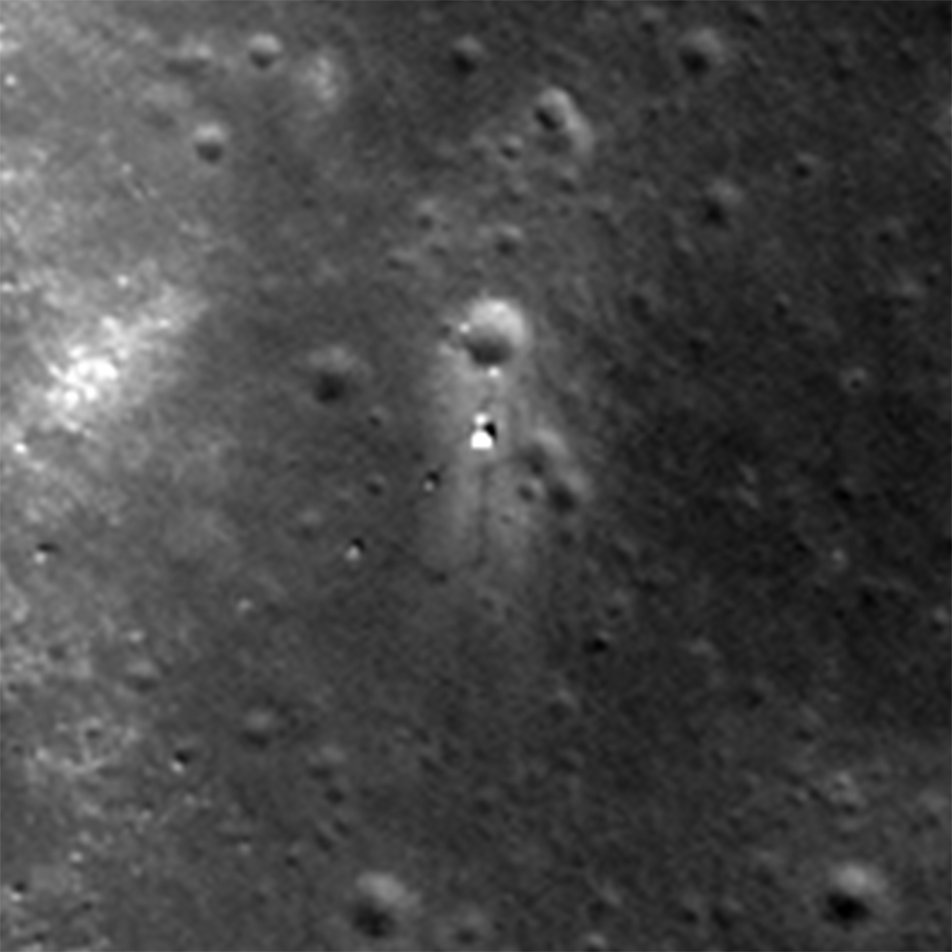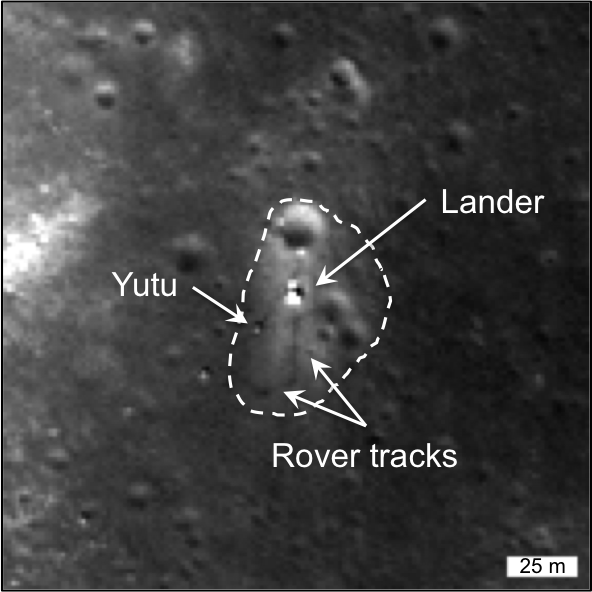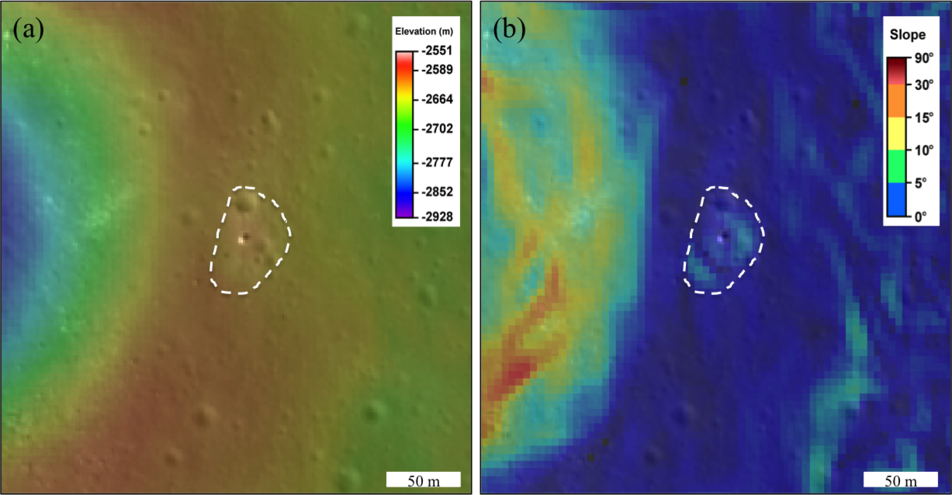
China’s robotic Chang'e-3 (CE-3) spacecraft, carrying the Yutu rover, touched down in Mare Imbrium on the lunar surface on 14 December 2013, making it the first lunar landing since 1976! The Lunar Reconnaissance Orbiter (LRO) Narrow Angle Camera (NAC) imaged the site both before and after landing. The vehicle consists of a robotic lander and a rover, Yutu, and is part of China’s Lunar Exploration Program. Both the lander and rover were equipped with eight scientific payload elements to image the surface, analyze compositional properties of the regolith, and investigate the subsurface structure of the regolith.
LRO passes over the CE-3 landing site once a month and has acquired about 40 (as of May 2016) high-resolution NAC images of the landing site over a range of viewing and lighting angles. These images reveal an area of increased reflectance around the lander, caused by the interaction of rocket exhaust with the regolith. This high reflectance feature, called a blast zone (BZ), is seen at all other lunar landing sites and is presumably caused by smoothing of the soil and/or redistribution of fine soil particles. Rover tracks from Yutu are visible at the CE-3 site and appear less reflective than the blast zone, likely owing to increased roughness and/or compaction that decreased porosity and created a more forward scattering (and therefore less reflective) surface texture in the tracks.

A unique aspect of the timing of the CE-3 landing is that LROC was able to image the landing site both before and after the lander touched down! These images enable us to directly measure the change in reflectance associated with the blast zone and compare the changes to those observed at other landing sites from decades ago. We can also use these before and after images to create multi-temporal ratio images, which are made by dividing an image after landing by an image before landing (with both having similar illumination geometries). These multi-temporal ratio images reveal changes in reflectance at the landing site and reveal the boundary of the blast zone.
Multi-temporal ratio images (shown below) show the area that was disturbed by rocket exhaust during landing as a bright (increased reflectance) feature, outlined in yellow. This image also shows a diffuse area of reflectance slightly larger than the primary blast zone feature (outlined in white; extending ~40–50 m from the edge of the BZ in the N-S direction, and ~10–15 m in the E-W direction). In a new paper from the LROC team, these areas are separated into the diffuse blast zone (DBZ) and the more highly reflective focused blast zone (FBZ). It is difficult to determine the cause of the DBZ, but it may be related to the way the spacecraft hovered during hazard avoidance maneuvers that it carried out prior to touchdown. This diffuse zone is not seen at the older landing sites, although it is possible that they existed initially but simply are not observable without the high-quality, before and after images such as those available for the CE-3 site.

Changes in local slopes contribute to changes in reflectance, so the reflectance must be “corrected” by taking local slopes into account using a Digital Terrain Model (DTM). However, local slopes and topography seem to have affected the shape of the BZ, as evidenced in the image below. During the final few meters of descent, the rocket exhaust impinging upon the surface generally moves horizontally along flat surfaces but can be deflected by changes in topography. At the CE-3 site, the BZ is wider to the east of the lander and appears to coincide with a slight rise and fall in topography. Similarly, the BZ extends slightly farther in the southwest direction than in the southeast direction, also coinciding with an increase in elevation, which may have acted as a barrier to the rocket exhaust.

One of the key motivations for comparing the Chang'e-3 landing site blast zone effects to those of the older landers (Apollo, Luna, and Surveyor) is to assess whether reflectance changes have occurred at the earlier landing sites over the past 40 to 50 years (post-landing). One of the conclusions of this new work is that the increase in reflectance seen in the Chang'e-3 BZ is of the same magnitude as the increase in reflectance in the BZs of Apollo, Luna, and Surveyor, as observed today. These reflectance similarities suggest that reflectance changes resulting from rocket exhaust interacting with regolith during spacecraft landing have not measurably changed over 40-50 years.
See the full story on the Chang'e-3 landing site in the new Lunar Reconnaissance Orbiter special issue of Icarus:
Photometric characterization of the Chang'e-3 landing site using LROC NAC images, Clegg-Watkins, R. N., B. L. Jolliff, A. Boyd, M. S. Robinson, R. Wagner, J. D. Stopar, J. B. Plescia, E. J. Speyerer (2016). Icarus, 273, 84–95, doi:10.1016/j.icarus.2015.12.010.
Related Featured Images:
Chang'e 3 Lander and Rover from Above
The Chang'e 3 Landing Site in 3D
Published by Brett Denevi on 13 May 2016